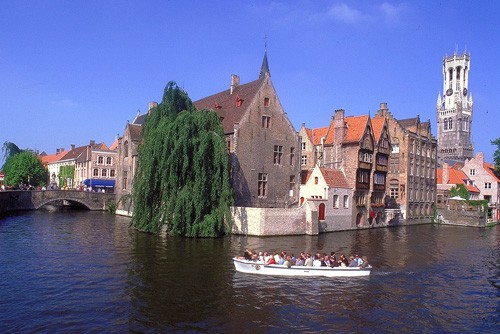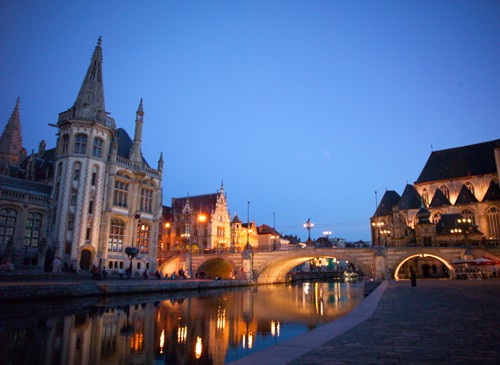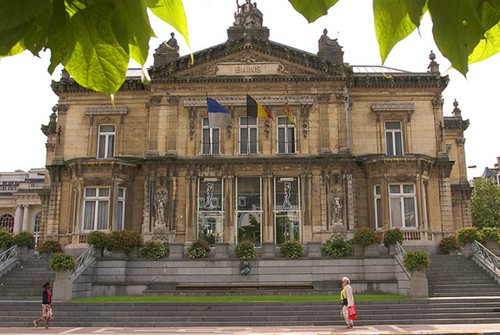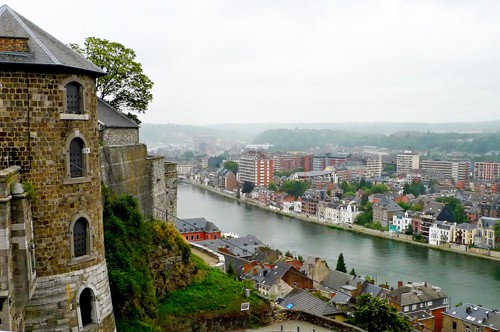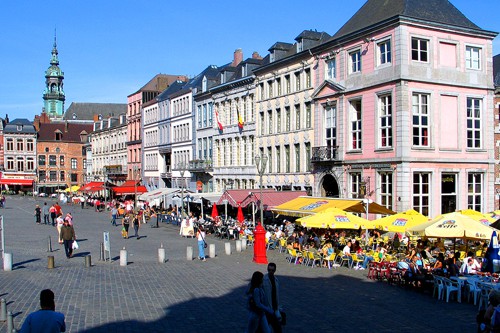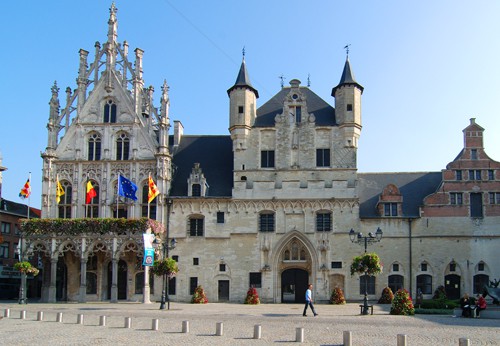Brussels is quickly gaining a reputation as one of Europe’s must-see
destinations. With its central location in the heart of Europe, Brussels
is easily accessible by air or high-speed rail from neighboring
countries. It is an international metropolis – a mosaic of languages,
cultures, and traditions – and the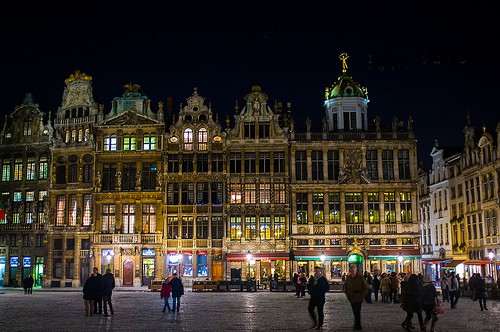 home of the European Union, NATO and
hundreds of international organizations, English is widely spoken,
making it a great place for even a novice French-speaker to get by
without an issue.
home of the European Union, NATO and
hundreds of international organizations, English is widely spoken,
making it a great place for even a novice French-speaker to get by
without an issue.
 home of the European Union, NATO and
hundreds of international organizations, English is widely spoken,
making it a great place for even a novice French-speaker to get by
without an issue.
home of the European Union, NATO and
hundreds of international organizations, English is widely spoken,
making it a great place for even a novice French-speaker to get by
without an issue.ALSO The Beauty holder Belgium
Don’t let Belgium’s relatively small size fool you — this country probably has more to do per square mile than most other places on earth. And best of all for the traveler, it’s a comparatively easy place to get around and English is widely spoken.
The country is divided into two ethnic regions, Dutch-speaking Flanders to the north and French-speaking Wallonia to the south. Dividing them is an imaginary east-west line that bisects the country at Brussels, which is claimed by both. Although this is a major political conundrum for the Belgians, for the traveler it’s inconsequential.
Forget the politics and focus instead on the cornucopia of culture, historic places and beautiful towns and cities you’ll find everywhere. Visit Brussels, the self-proclaimed “Capital of Europe” that is the headquarters of the European Union and NATO. Surely wander around the magnificent Grande Place, but also see such great museums as the Magritte, dedicated to Belgium’s famous surrealist painter. Cruise the canals of popular Bruges and Ghent, but also be sure to visit such treasures as Liege, Spa (luring spa-goers since the 14th century) and historic Bastogne, made famous by the Battle of the Bulge in WWII.
As highly regarded as the masterpieces in its museums is Belgium’s well-deserved reputation for superb food and drink. This year, in fact, is the Year of Gastronomy in Brussels and Wallonia, although you’ll certainly eat well wherever you go. If you’re up north in Flanders in August, you can get a Taste of Antwerp at Belgium’s largest culinary festival.
Just remember that “If It’s Tuesday This Must Be Belgium” was a comedic spoof of American travelers, not a suggested itinerary for the rest of us. Here are the top places in Belgium as listed by the Belgian Tourist Office and the Tourist Office for Flanders, Belgium.
Brussels
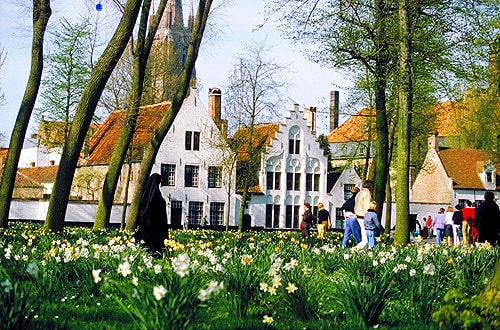 Brussels is a classic European city with small town charm and
cosmopolitan attractions. Among the most celebrated attractions are the
Grand Place, Europe’s most beautiful medieval square lined with guild
houses. Originally built in the 13th century, the square is a
UNESCO World Heritage Site. Every other year for two days (it will
occur be in 2012) the Grand’Place is decked out in an amazing flower
carpet, made up of 1 million begonias.
Brussels is a classic European city with small town charm and
cosmopolitan attractions. Among the most celebrated attractions are the
Grand Place, Europe’s most beautiful medieval square lined with guild
houses. Originally built in the 13th century, the square is a
UNESCO World Heritage Site. Every other year for two days (it will
occur be in 2012) the Grand’Place is decked out in an amazing flower
carpet, made up of 1 million begonias.Just a short walk from the Grand Place is the Mannekin Pis, a small bronze statue of a little boy relieving himself. The statue, a great example of Belgium’s quirky sense of humor, is often given costumes to mark various occasions, anniversaries or events.
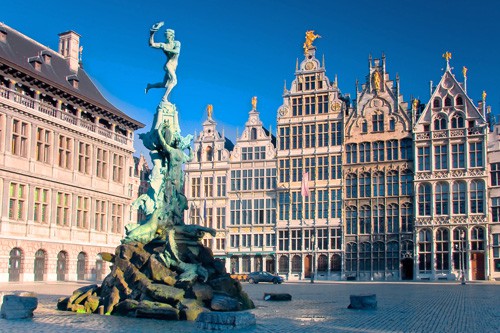
Antwerp
Known for its vibrant nightlife, its funky bars and restaurants and numerous festivals, Belgians see Antwerp as the “capital of cool.” The Antwerp Fashion Academy produced a group of avant-garde designers who made a big splash on the fashion scene in the 1980′s and became known as “The Antwerp Six”. Nowadays, the academy continues to churn out new, hot talent.If shopping is not your thing, discover the compact center of Antwerp, which juxtaposes beautiful medieval buildings with modern architectural landmarks. Antwerp is also an art-loving city with which the name Rubens is eternally linked. More than 400 years after the birth of this brilliant painter, it is still possible to see the extent to which Rubens left his mark on the city. Funky nightlife, historical buildings, and the biggest diamond center in the world, Antwerp offers something for everybody.
Bruges
The historic center of Bruges is on the list of UNESCO World Heritage Sites and is teeming with places of interest. With the city center closed off to cars, all the stunning beauty and culture of this unforgettable city can be easily explored on foot, by boat along quiet canals, or by horse-drawn carriage on cobblestoned streets. Although Bruges is a small city, it is filled to the brim with architectural and artistic treasures, folklore, chocolate shops, lace boutiques and fine restaurants. Two popular places in the city are The Beguinages (on the UNESCO World Heritage list, it is the home of the nuns of the order of Saint Benedict) and the Halve Maan Brewery, a family-owned brewery and creator of the famous ‘Brugse Zot’ beer. Two economical was to visit the city are by using the discount Bruges City Card and by touring the countryside outside the city by bicycle.Ghent
If you ask a Belgian where they like to travel within their own country, many will tell you about the friendly city of Ghent. With most of the town center closed to cars, they will probably also tell you that Belgium’s third largest city is best explored on two wheels or by boat along the elegant canals.Ghent is an unassuming, un-touristy city filled with university students, linger-as-long-as-you-like cafes, well-priced restaurants and vibrant energy. It’s a city with great mustard, Stropke beer (which is Flemish for noose), and the ten-day Ghent Celebrations held every year in July where the inhabitants go all out with theater performances, concerts, singing, dancing, and drinking.
Under the watchful eye of Gravensteen Castle or Castle of the Counts, the city boasts an Opera House, 18 museums, 100 churches and over 400 historical buildings. The most visited site in Ghent is the famous and beautiful polyptych, the Adoration of the Mystic Lamb painted by the brothers Jan and Hubert van Eyck in 1432.
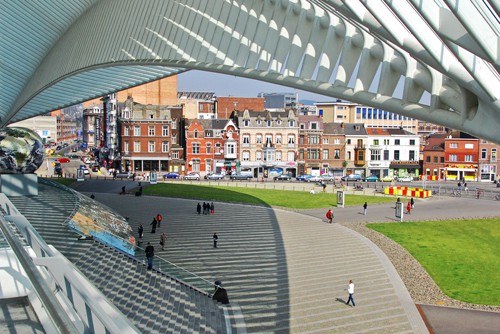 Liege
Liege
Liege, the largest French-speaking city in Belgium after Brussels, is
a historical city situated along the Meuse River. In the fall of 2009,
the city welcomed the opening of a stunning, new train station, which
brings visitors to Liege from Brussels in 1 hour, Maastrict, Holland in
20 mins and Paris in 2 hours. Designed by the world-renowned architect
Santiago Calatrava, it’s a prime example of Liege’s modern
transformations.Dating back to Charlemagne, Liege is a treasure trove of historical sites and celebrated collections. Sitting on the Meuse River is the Grand Curtius, home to the prestigious archaeology, decorative arts, religious and Mosan art museums, a glass museum as well as the famous weaponry museum. Travel back in time as you walk the Coteaux, a winding path of steps and courtyards leading up to the citadel of Liege with an incredible view. Just outside the city, visitors have easy access to the Blegny mines and the Henri Chapelle American Military cemetery, the largest in Belgium. The city will host the opening leg of the Tour de France this summer!
Spa
Less than an hour from Liege is the city of Spa, a picturesque Belgian town often referred to as the “Pearl of the Ardennes,” nestled in a wooded valley surrounded by rolling hills and countless rivers and springs. Having given its name to all spas, visitors from across Europe have traveled to Spa for its healing hot spring water treatments since the 14th century. For some travelers a trip to Spa must include a visit to the relaxing Thermes de Spa for any one of the many modern spa treatments.Spa became a resort town in the 18th century because of its hot spring waters and is still home to the world first casino, built in 1763 to cater to visitors. Today, it hosts one of the most important and fun annual music festivals in Belgium’s French-speaking region, The Francopholies. Formula 1 racing fans may be familiar with Spa because it is home to the Spa-Francorchamps racetrack, the most scenic in the circuit, and host of the Grand Prix each year at the end of August.
Namur
Namur, the capital of Belgium’s French-speaking region, sits along the Meuse River and is just 1-hour by car or train from Brussels. This impressive fortified town is surrounded by one of Europe’s largest ancient citadels, first built during the 3rd and 4th centuries, and later reconstructed during the 13th and 14th centuries. For shopaholics the city is popular for its many fabulous boutique shops.Just outside of Namur, the towns of Dinant and Wepion offer a wonderful day trip to visitors with an explorer’s spirit. During the summer months, Wepion produces rich and flavorful strawberries and strawberry stands from local farmers line the streets selling the fresh fruit. Further down the road, is the city of Dinant, sandwiched between the Meuse River and its citadel, originally built in 1051. You can spend a day visiting the waterfalls of the Grotto of Dinant or the Sanctuary of Beauraing, then grab a table at one of the local café while taking in the views of the sparkling Meuse River.
Bastogne
In this town close to the Luxembourg border, thousands of American soldiers died fighting in WWII during the Battle of the Bulge. Their legacy lives on in the hearts and minds of locals and they take it upon themselves to remember the sacrifice those soldiers made for them and their town. On the Grand Place of Bastogne, there’s a Sherman Tank from the 11th US Armored Division.Just outside town, is the Mardasson Memorial, built to honor the memory of the 76,890 American soldiers killed, wounded or missing in the battle from the 48 states, plus the then-territories of Alaska and Hawaii. Also located just outside Bastogne is the Wood of Peace. The 4,000 trees in the woods, planted for the 50th anniversary of the Battle of the Bulge, were dedicated to the American veterans who fought in the Ardennes, Belgian combatants and all the civilians and soldiers who died in the winter of 1944-45. Every veteran who returned to Bastogne in 1994 chose a tree, which will always bear his name. The Wood of Peace design, only visible from above, is laid out in the image of the UNICEF emblem: a mother and child, symbol of human tenderness.
Mons
Located just 1 hour from Brussels, Mons is a city rich in history and tradition. The town hall building on the Grand Place of Mons, constructed between 1458 and 1477, has a Belfry, listed as a UNESCO World Heritage Site. Van Gogh also spent some time near Mons before moving on to Provence. His house, an authentic and preserved environment, now houses a permanent exhibition of reproductions and an audio-visual show in various languages, including English.The most important event of the year, however, is the Ducasse de Mons or the Doudou, dating back to 1349 and the Fraternity of Saint George. Each June, the city of Mons is filled with visitors who come to witness the reenactment of Saint George slaying the Dragon. As the dragon swings its tail at the crowd, spectators try to grab the tail and pull out its hair and ribbons, both of which bring good luck. This popular festival is recognized by UNESCO as a Masterpiece of the Oral and Intangible Heritage of Humanity. In 2015 Mons will be the European Capital of Culture.
